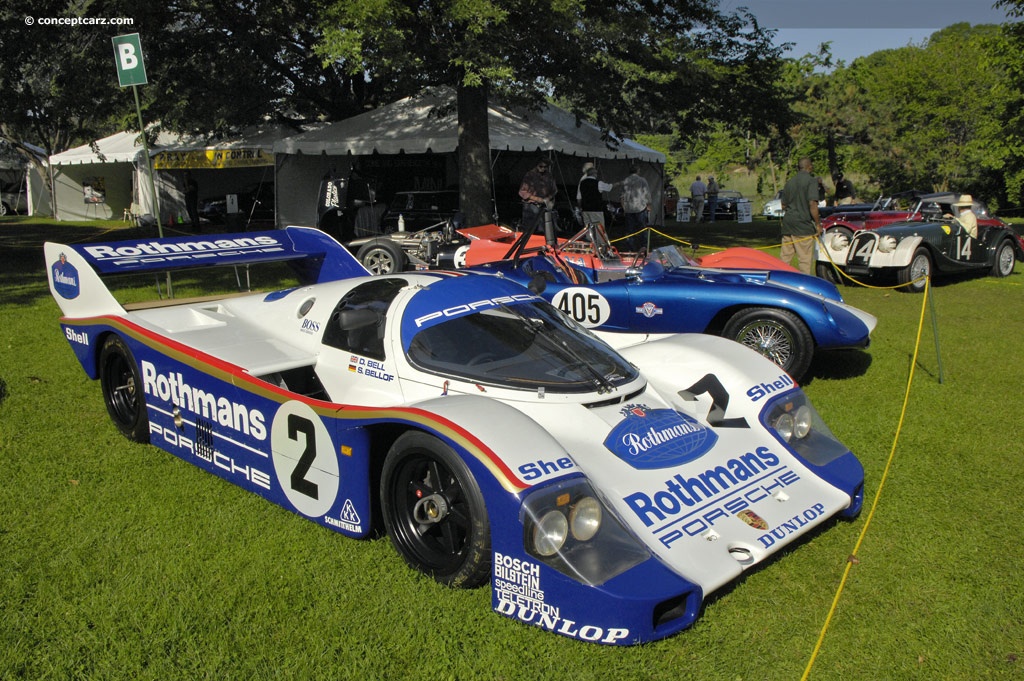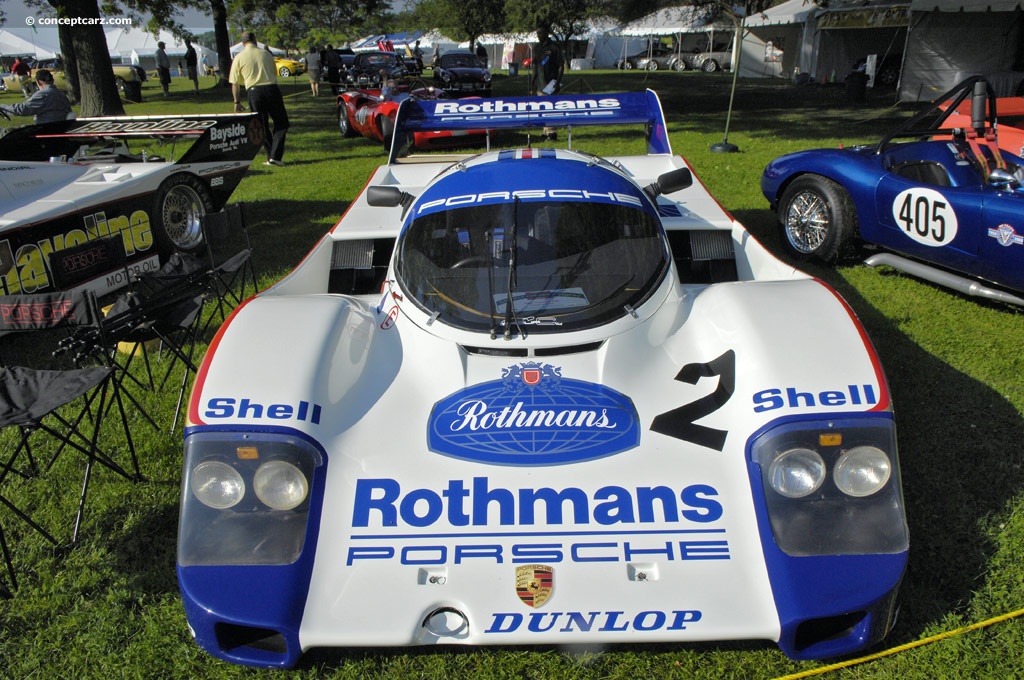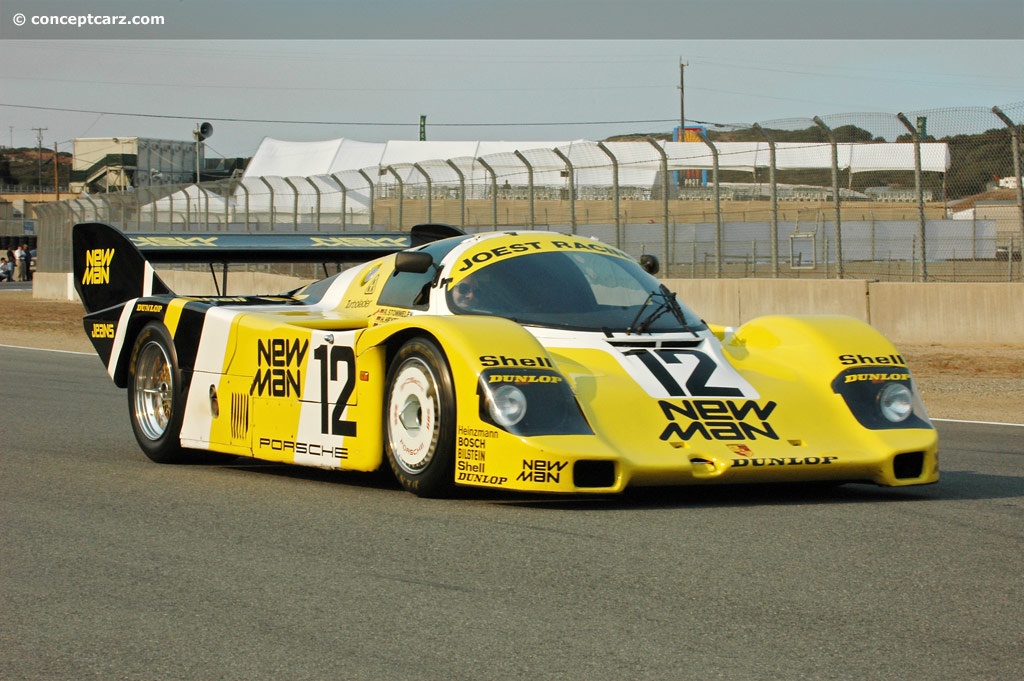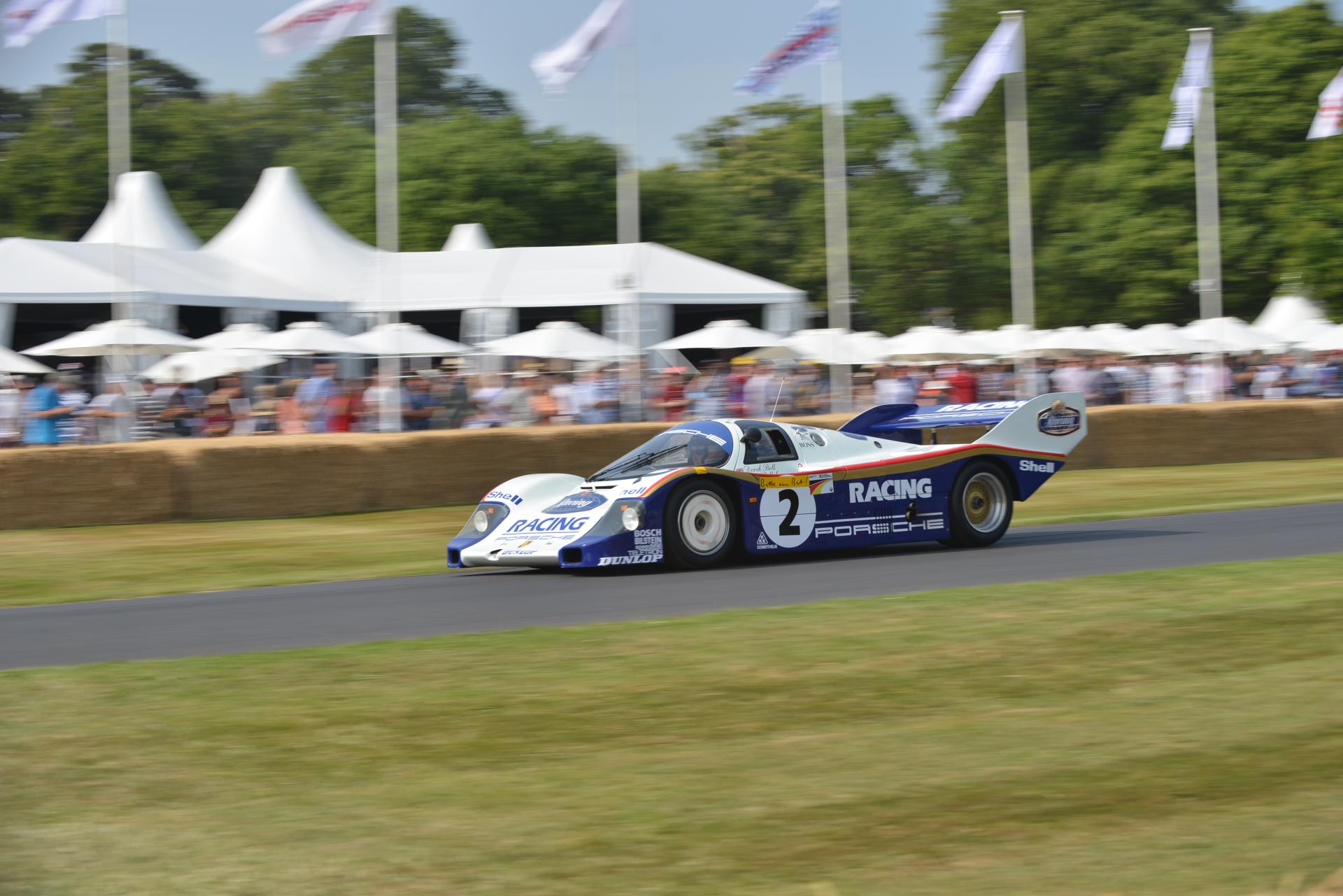The Porsche 956 was born from another iteration of Group C rule changes introduced in 1982 that ultimately resulted in the creation of several important innovations. Designed by Norbert Singer and built by Porsche, the 956 was the marque's first race car to feature monocoque construction, with even the engine serving as a load-bearing component. It was also the first such car equipped with so-called ground effects, where cornering force is maximized by the aerodynamic channeling body features, resulting in over three times as much downforce as the Porsche 917 of the previous decade. Among the accolades achieved by the 956 was a lap record at the Nürburgring Nordschleife set by Stefan Bellof in 1983 during the 1000 km Sports Car race in a time of 6:11.13. This record was eventually surpassed 35 years later by Timo Bernhard on June 29th, 2018, in a derestricted Porsche 919 Evo. 
Coupe
Chassis #: 956.009
View info and historyPorsche's earliest attempts at motorsports were often rewarded with class victories at many of the famed racing circuits throughout the world but often outpaced for overall victory by more potent competitors. This changed with the arrival of the 917 in the late 1960s, earning Porsche its first overall victory at the 24 Hours of Le Mans in 1970 and 1971. The 917 was a five-liter Group 5 Sports Car, while its successor, the Porsche 936 introduced in 1976, contested the Group 6 sports prototype racing class of the World Sportscar Championship (WEC). From 1976 to 1981, the factory entered Porsche 936 won the 24 Hours of Le Mans three times (in 1976, 1977 and 1981). The design and construction of the Porsche 956 was overseen by Porsche racing director Peter Falk, and included Norbert Singer, Horst Reitter, Valentin Schafer, and Eugen Kolb. Each of these five individuals had been employed by Porsche for at least two decades and their vast experience in the development of LeMans-winning sports cars extended to the 917 and 936. Their talents and expertise allowed them to design a completely new car, ready to race in less than a year. In Many ways, the Porsche 956 was a dramatic and drastic departure for Porsche, powered by a tried-and-true twin-turbocharged flat-six engine. The 956 replaced the successful 936 model in 1982, powered by a 2.65-liter turbocharged Flat-6 used in the 936/81 and offering 635 horsepower. The original configuration of the 936 used a 2.14-liter 2.14-liter (2140cc) air-cooled, two-valve, turbocharged flat-6 with 540 horsepower. Many of the components, including the spaceframe chassis of the 936, were based on the 917. The 956 had an aluminum monocoque which allowed the car to comply with the 800 kg weight minimum in Group C regulations. An improved version of the chassis, along with a Bosch Motronic electric system, was developed for 1984, being termed the 956B.
Coupe
Chassis #: 956.009
View info and historyThe engine was backed by a five-speed manual transmission with a dual-clutch. This was the first use of a 'dual-clutch' or Porsche Doppelkupplungsgetriebe ('dual-clutch gearbox') (PDK) transmission.The bodywork of the 956 was similarly groundbreaking and it was among the first sports cars to use state-of-the-art ground effects. The design allowed most of the rear suspension to be moved out of the airstream. Large under-floor tunnels, or venturis, began behind the flat portion and extended to the tail. Along with the carbon-reinforced Kevlar body and adjustable rear wing, the 956 generated immense downforce. Two different rear wing designs were used by the 956, with large, high downforce wings installed for most events. For the LeMans track, however, used a much lower and smaller 'low drag' wing where high speed was prioritized, enabling it to reach speeds of around 225 mph on the long Mulsanne Straight. Privateers took the design further, experimenting with a front wing attached to the cars to increase front downforce and make the 956 more effective on tighter circuits. Testing in wind tunnels revealed that this design disrupted airflow over the car and increased the aerodynamic drag, resulting in slower straight-line speeds.Between 1982 and 1984, Porsche built twenty-eight examples of the 956, while an unofficial 29th example was constructed from spare parts by Richard Lloyd Racing. The first 956s built, beginning with chassis 956-001, was constructed strictly for the Porsche works team and utilized many technically advanced features. The customer cars, beginning at 956-101, were more standardized. 
Coupe
Chassis #: 956-105The Porsche 956 made its competition debut at the 6 Hours of Silverstone on May 16th of 1982, where Jacky Ickx and Derek Bell MBE drove 956-001 to a 2nd Place finish. This was followed by a 1st, 2nd, and 3rd place finish at the 24 Hours of Le Mans in just its second race. Porsche 935s took the 4th and 5th place. Porsche 956-003 placed 2nd, with 956-002 taking the laurels. After Le Mans, Porsche sold customer versions of the 956 to privateer teams including Kremer Racing, Brun Motorsport, Joest Racing, Obermaier Racing, John Fitzpatrick Racing, and Richard Lloyd Racing. The factory team returned to Le Mans in 1983, again with three entries sponsored by Rothmans and supported by eight privateers. Again, the 956s proved nearly unbeatable, sweeping the top eight finishing positions, plus 10th. That resulted in a famous factory poster that admitted 'Nobody's Perfect!' Privateers earned victories at Le Mans in 1984 and 1985.With the 956 winning at Sarthe four straight years, FISA changed Group C rules once again, hoping to disrupt its dominance. Porsche engineers modified the 956, resulting in the 962 which proved equally impressive in Group C and the IMSA-GT series in the United States. In total, the 956 and its derivative dominated prototype racing for over a decade, despite it receiving only minor modifications during that time.
by Daniel Vaughan | Dec 2021

Coupe
Chassis #: 956.009
View info and history

Coupe
Chassis #: 956.009
View info and history

Coupe
Chassis #: 956-105
by Daniel Vaughan | Dec 2021
Related Reading : Porsche 956 and 962 History
Porsche created the 956 during the early 1980s for FIA Group C competition. The design and components of the vehicle would further evolve over the years and become known as the 962. The 956 project was led by a very determined and experienced project manager named Norbert Singer, who had his sights set on winning the 24 Hours of LeMans race. With Derek Bell and Jacky Ixckx, the factory team drivers,....
Continue Reading >>
Continue Reading >>
1983 Porsche 956 Vehicle Profiles
Recent Vehicle Additions
Related Automotive News

Porsche Rennsport Reunion VI : Highlights: of man and machines
Stuttgart. The Porsche Rennsport Reunion VI at Laguna Seca (USA) has more than 60,000 fans of the brand from Stuttgart spellbound. At the four-day event in California, avid motor racing enthusiasts in legendary vehicles and unforgotten works...

The Only Porsche 956 to Win on American Soil set for RM Sotheby's Porsche 70th Anniversary Auction
SINGLE-MARQUE AUCTION SET AT THE PORSCHE EXPERIENCE CENTER ATLANTA
RM Sothebys announces time-warp Porsche 956 Group C for Porsche 70th Anniversary Auction, 27 October
Chassis 110 is the only 956 to achieve victory on American soil, and i...

Porsche Achieves Fabulous Nürburgring Lap Time With Hybrid Prototype Race Car
Stuttgart. This Friday morning Timo Bernhard (D) lapped the 20.832 kilometre (12.94 miles) Nürburgring Nordschleife race circuit in 5 minutes and 19.55 seconds. This results in an average speed of 233.8 kmh (145.3 mph) on what is revered by race...

PORSCHE MOTORSPORTS PRE-EVENT NOTES. 24 HOURS OF LE MANS
The #20 Porsche 919 Hybrid with drivers (left to right) Mark Webber, Timo Bernhard, and Brendon Hartley, at Le Mans tech inspection earlier today in the town of Le Mans.
Dateline. Le Mans, France
Circuit. Circuit de la Sarthe
Track LengthTurns....

Techno Classica 2014: more than 30 racing cars to celebrate 120 years of Mercedes-Benz motor racing history
Cars that were the heroes of magical moments put their stamp on this high-powered, most comprehensive show presentation
With more than 30 vehicles, Mercedes-Benz Classic presents motor racing history in all its unique breadth and depth
120 years o...




























